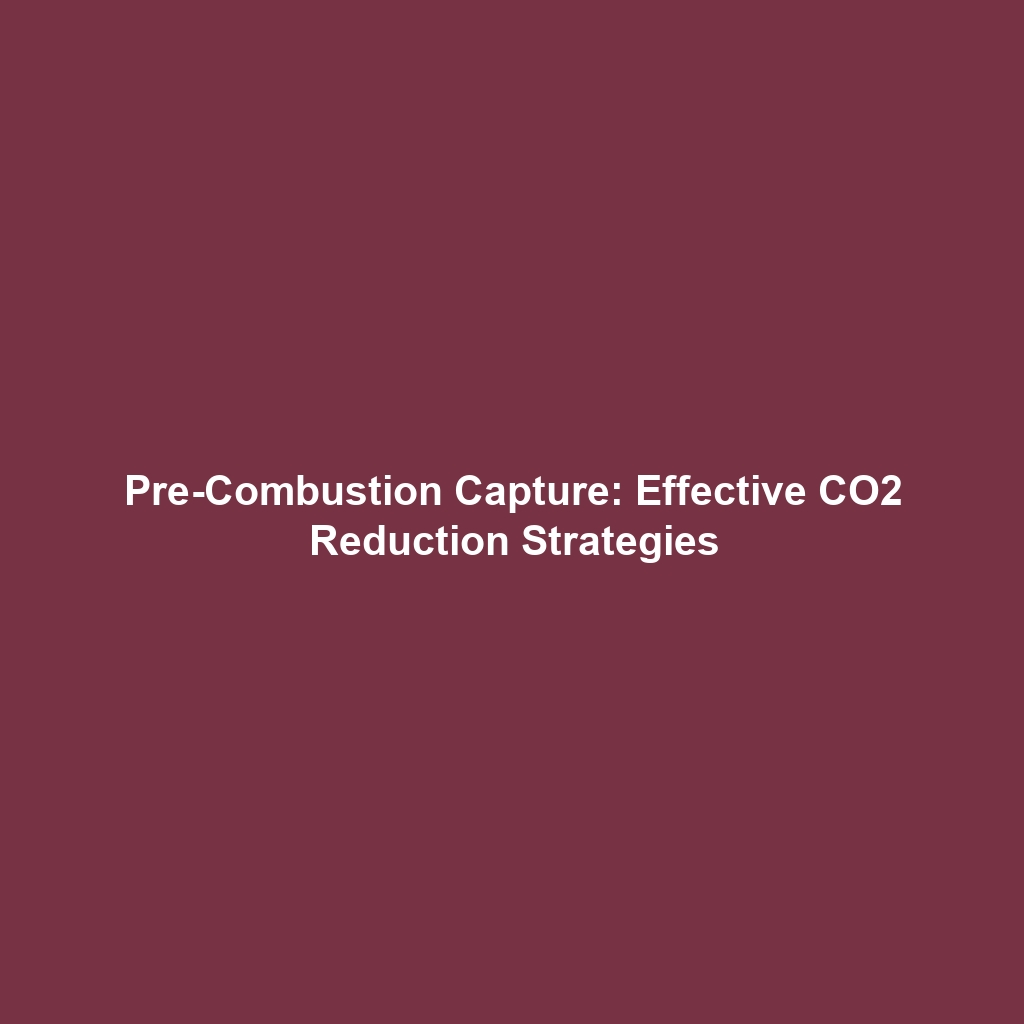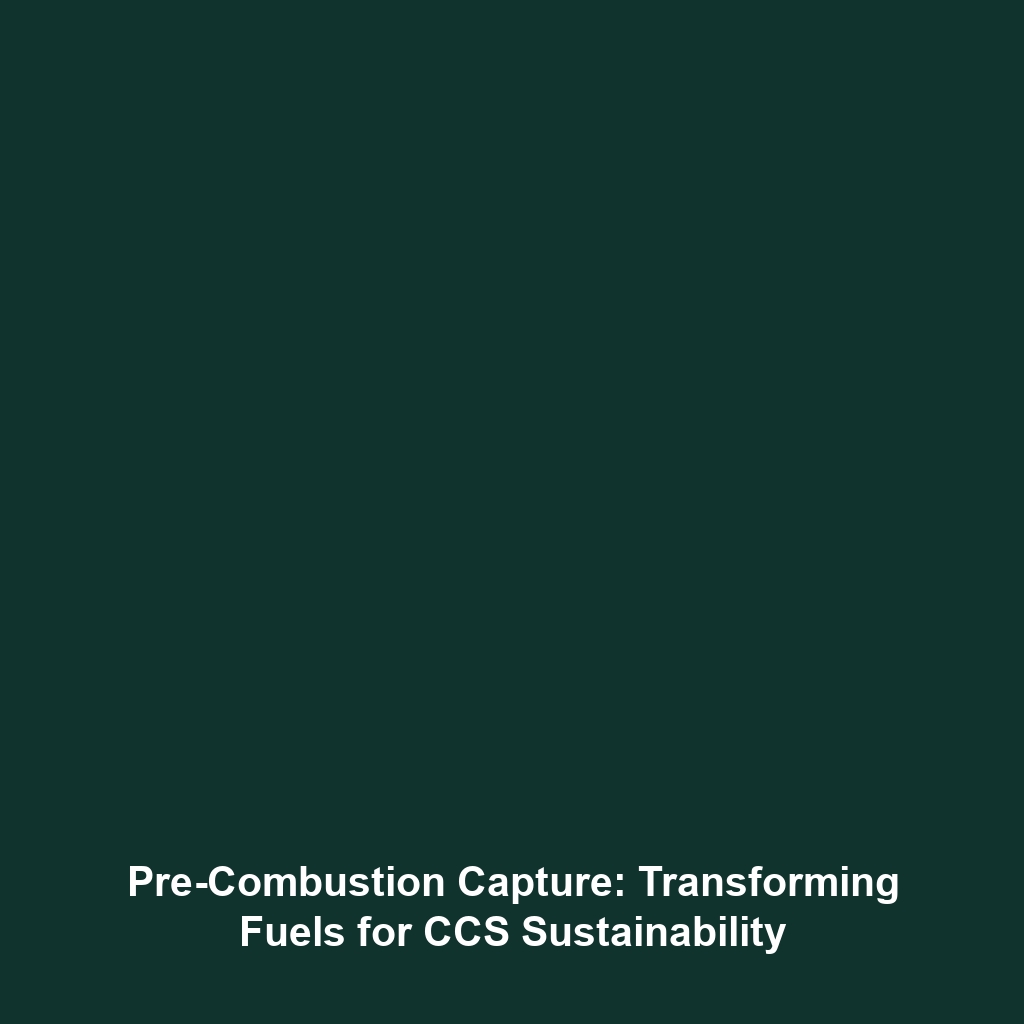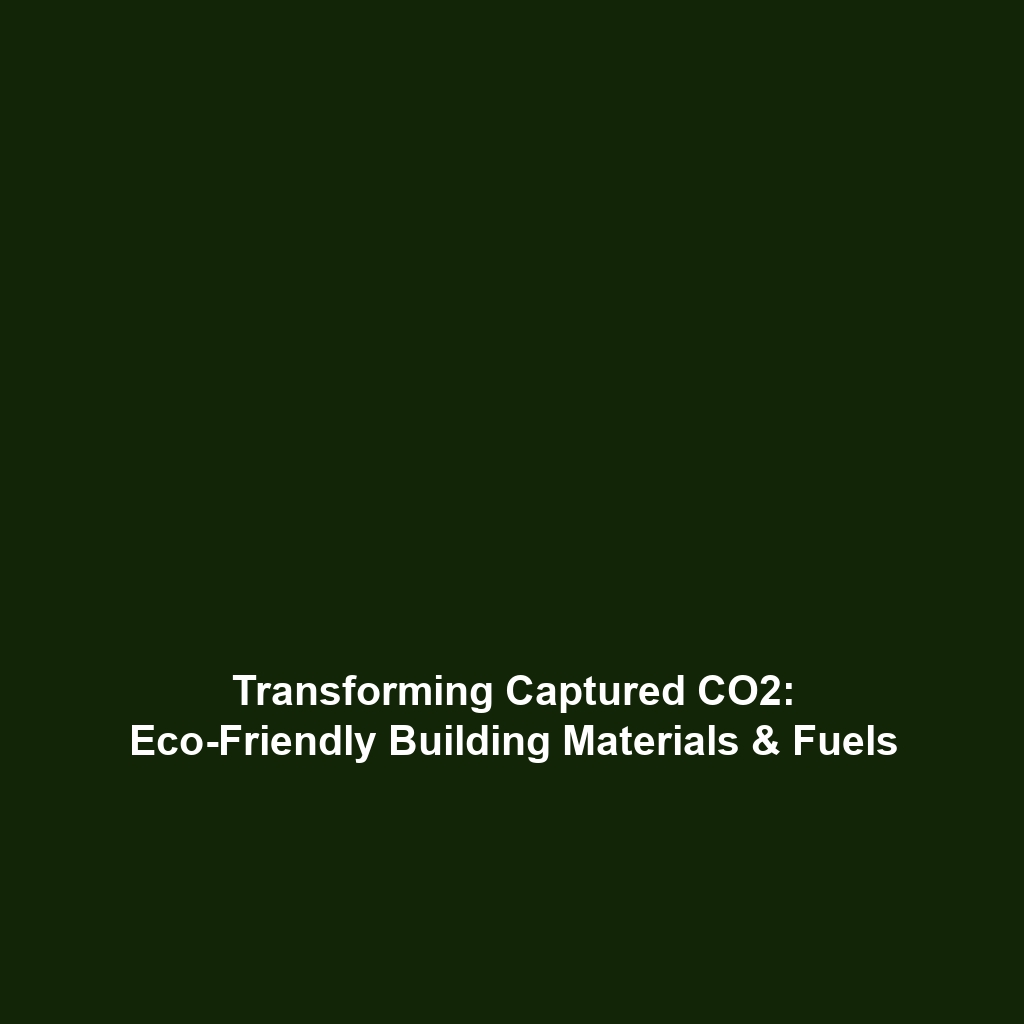CO2 Separation and Hydrogen Utilization in Carbon Capture & Storage (CCS)
Introduction: The significance of separating and storing CO2 while burning hydrogen to produce energy lies at the forefront of advancements in Carbon Capture & Storage (CCS) technologies. As global efforts intensify towards reducing greenhouse gas emissions, understanding the dual processes of extracting useful energy from hydrogen and responsibly managing resulting CO2 is crucial. This strategy not only aids in facilitating energy production but also addresses the ongoing climate crisis, showcasing the essential role of CCS in creating a sustainable future.
Key Concepts
To grasp how CO2 is separated and stored while hydrogen is utilized for energy production, it’s essential to understand several key concepts:
Carbon Capture Technology
This involves various methodologies to separate CO2 from industrial processes, aiming to prevent it from entering the atmosphere. Key methods include:
- Pre-combustion Capture: The separation of CO2 before fuel combustion.
- Post-combustion Capture: Removal of CO2 after fuel has been burned.
- Oxy-fuel Combustion: Burning fuel in a mixture of pure oxygen to produce CO2 and water, making CO2 easier to capture.
Hydrogen Production
Hydrogen can be generated from various methods, including:
- Steam Methane Reforming (SMR): The most common method for hydrogen production, generating hydrogen from natural gas.
- Electrolysis: Splitting water into hydrogen and oxygen using electricity, ideally from renewable sources.
Applications and Real-World Uses
The processes involved in CO2 separation and storage, combined with hydrogen utilization, find significant real-world applications:
- Power Generation: Hydrogen can be burned in gas turbines or fuel cells, providing a clean energy source while minimizing CO2 emissions.
- Industrial Processes: Industries like cement and steel can utilize captured CO2 in their production methods, reducing their carbon footprint.
- Enhanced Oil Recovery: Captured CO2 can be injected into oil reservoirs to improve extraction rates, serving dual purposes of energy production and CO2 storage.
Current Challenges
Despite its potential, the challenges of CO2 separation and hydrogen utilization within CCS must be addressed:
- High Implementation Costs: Initial investment in CCS infrastructure can be substantial.
- Energy Requirements: Energy consumption for capturing and compressing CO2 can offset the carbon savings.
- Limited Infrastructure: The need for a robust transport and storage network for captured CO2 remains a significant hurdle.
Future Research and Innovations
Ongoing research in CO2 capture and hydrogen energy is pivotal for future advancements in CCS technologies. Key areas of innovation include:
- Direct Air Capture: Technologies that remove CO2 directly from the atmosphere.
- Next-Generation Hydrogen Production: Research into greener hydrogen generation methods, such as thermochemical cycles, is underway.
- Biological Carbon Capture: Utilizing algae or other organisms to capture CO2 biologically presents an environmentally-friendly alternative.
Conclusion
Understanding how CO2 is separated and stored while hydrogen is burned for energy is essential for addressing climate change through effective Carbon Capture & Storage (CCS) solutions. With continued research and innovation, these technologies hold great promise in moving towards a low-carbon economy. Explore further topics related to current trends in CCS and the benefits of hydrogen energy to stay informed about the progress in this field.



